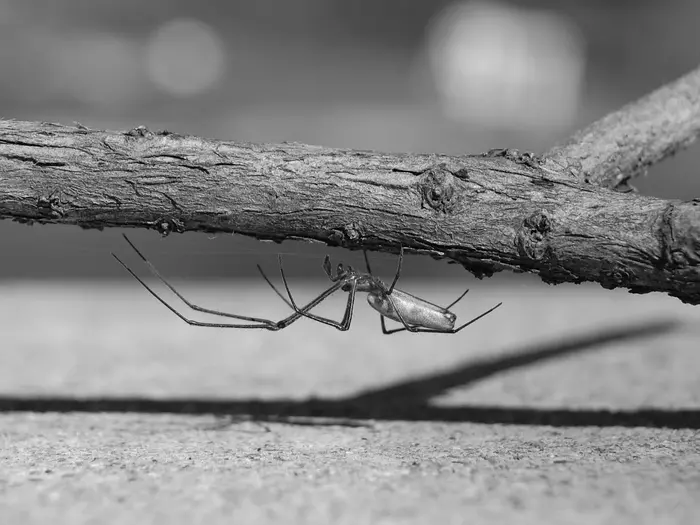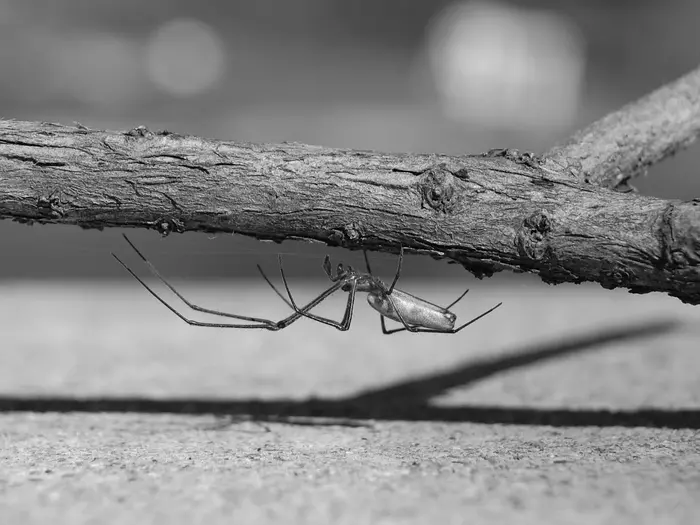Sitting calmly in their webs, many spiders wait for prey to come to them. Arachnids along lakes and rivers eat aquatic insects, such as dragonflies. But, when these insects live in mercury-contaminated waterways, they can pass the metal along to the spiders that feed on them. Now, researchers reporting in ACS’ Environmental Science & Technology Letters have demonstrated how some shoreline spiders can move mercury contamination from riverbeds up the food chain to land animals.

Credit: Dr. Ryan Otter, Grand Valley State University
Sitting calmly in their webs, many spiders wait for prey to come to them. Arachnids along lakes and rivers eat aquatic insects, such as dragonflies. But, when these insects live in mercury-contaminated waterways, they can pass the metal along to the spiders that feed on them. Now, researchers reporting in ACS’ Environmental Science & Technology Letters have demonstrated how some shoreline spiders can move mercury contamination from riverbeds up the food chain to land animals.
Most mercury that enters waterways originates from industrial pollution and other human activities, but it can also come from natural sources. Once in the water, microbes transform the element into methylmercury, a more toxic form, which biomagnifies and increases in organisms up the food chain. Scientists increasingly recognize spiders living on lakeshores and riverbanks as a potential link between contamination in waterways and animals that mostly live on land, such as birds, bats and amphibians, which eat the insects. So, Sarah Janssen and colleagues wanted to assess if shoreline spiders’ tissues contain mercury from nearby riverbeds and establish how these animals could connect mercury pollution in water and land animals.
The researchers collected long-jawed spiders along two tributaries to Lake Superior, and they sampled sediments, dragonfly larvae and yellow perch fish from these waterways. Next, the team measured and identified the mercury sources, including direct industrial contamination, precipitation and runoff from soil. The team observed that the origin of mercury in the sediments was the same up the aquatic food chain in wetlands, reservoir shorelines and urban shorelines. For instance, when sediment contained a higher proportion of industrial mercury, so did the dragonfly larvae, spider and yellow perch tissues that were collected. Based on the data, the researchers say that long-jawed spiders could indicate how mercury pollution moves from aquatic environments to terrestrial wildlife. The implication of these findings is that spiders living next to the water provide clues to the sources of mercury contamination in the environment, informing management decisions and providing a new tool for monitoring of remediation activities, explain the researchers.
The team also collected and analyzed tissues from two other types of arachnids from some sites: fishing spiders and orb-weaver spiders. A comparison of the data showed that the mercury sources varied among the three taxa. The team attributes this result to differences in feeding strategies. Fishing spiders hunt near water but primarily on land; orb-weavers eat both aquatic and terrestrial insects; but it’s the long-jawed species that feed most heavily on adult aquatic insects. These results suggest that although long-jawed spiders can help monitor aquatic contaminants, not every species living near the shore is an accurate sentinel, the researchers say.
The authors acknowledge funding from the U.S. Geological Survey Environmental Health Program and the U.S. Environmental Protection Agency Great Lakes Restoration Initiative.
The paper’s abstract will be available on Sept. 13 at 8 a.m. Eastern time here: http://pubs.acs.org/doi/abs/10.1021/acs.estlett.3c00450
The American Chemical Society (ACS) is a nonprofit organization chartered by the U.S. Congress. ACS’ mission is to advance the broader chemistry enterprise and its practitioners for the benefit of Earth and all its people. The Society is a global leader in promoting excellence in science education and providing access to chemistry-related information and research through its multiple research solutions, peer-reviewed journals, scientific conferences, eBooks and weekly news periodical Chemical & Engineering News. ACS journals are among the most cited, most trusted and most read within the scientific literature; however, ACS itself does not conduct chemical research. As a leader in scientific information solutions, its CAS division partners with global innovators to accelerate breakthroughs by curating, connecting and analyzing the world’s scientific knowledge. ACS’ main offices are in Washington, D.C., and Columbus, Ohio.
To automatically receive news releases from the American Chemical Society, contact [email protected].
Follow us: Twitter | Facebook | LinkedIn | Instagram
Journal
Environmental Science & Technology Letters
DOI
10.1021/acs.estlett.3c00450
Article Title
Mercury Isotope Values in Shoreline Spiders Reveal the Transfer of Aquatic Mercury Sources to Terrestrial Food Webs
Article Publication Date
13-Sep-2023





